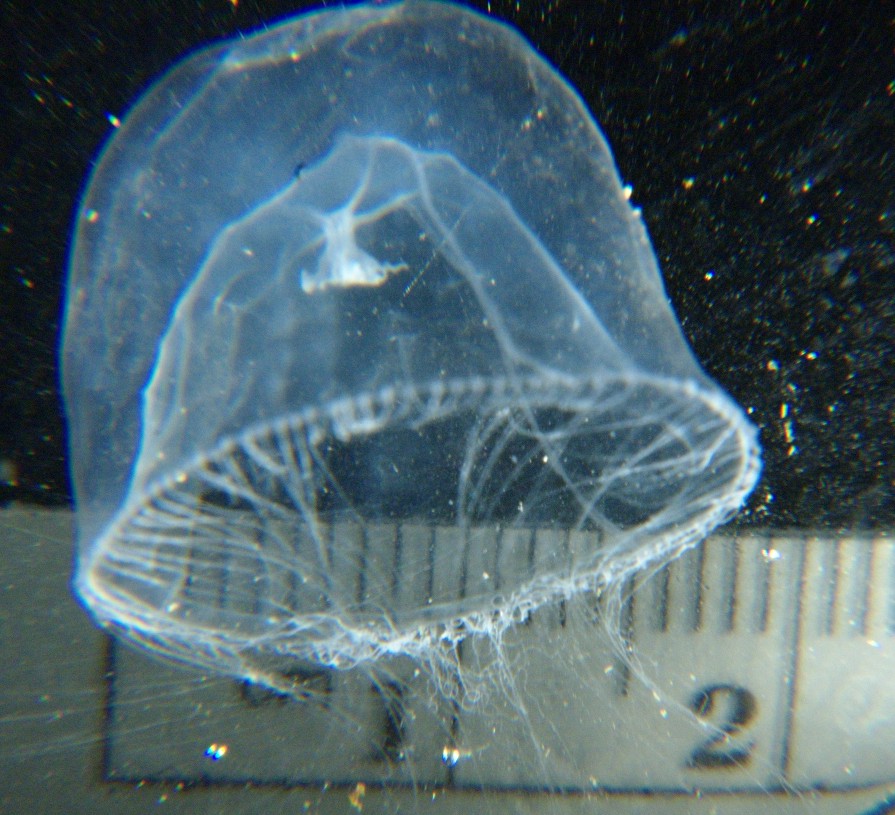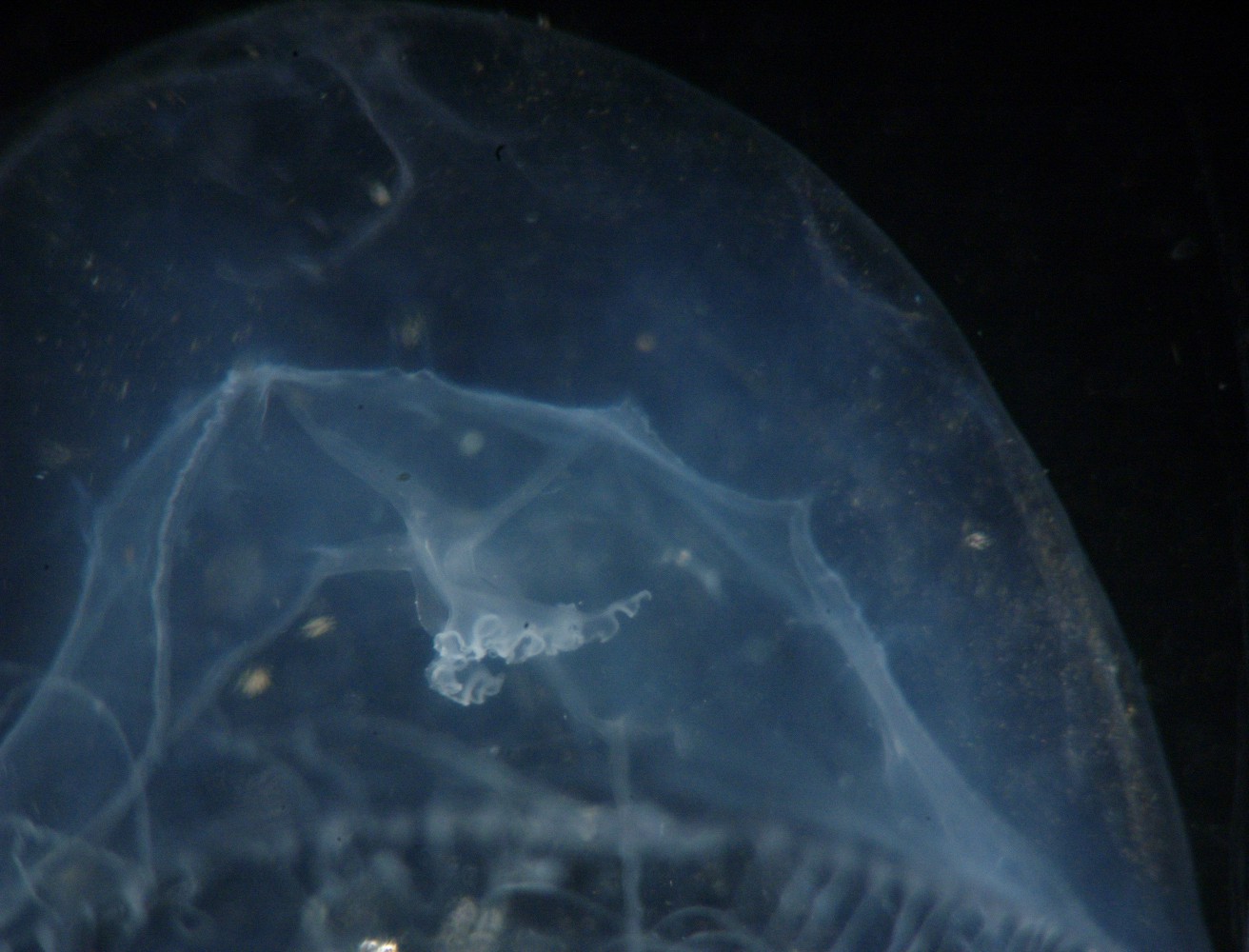How to Distinguish from Similar Species: Catablema multicirrata has a similar shape and many tentacles but the apex of the bell usually has a large, bulbous projection and it doesn't have orange on it.
Geographical Range: North Pacific (Bering Sea to Monterey Bay), Arctic, and North Atlantic oceans.
Depth Range:
Habitat: Pelagic
Biology/Natural History:
The polyp
stage is unknown for this species. Very little seems to be
known
about its biology.
| Return to: | |||
| Main Page | Alphabetic Index | Systematic Index | Glossary |
References:
Dichotomous Keys:Carlton, 2007
Kozloff, 1987, 1996
General References:
Wrobel
and Mills, 1998
Scientific Articles:
Web sites:
General Notes and Observations: Locations, abundances, unusual behaviors:
The manubrium
can be seen in this closeup.
Authors and Editors of Page:
Dave Cowles (2010): Created original page
CSS coding for page developed by Jonathan Cowles (2007)
Rosario Invertebrates web site provided courtesy of Walla Walla University

